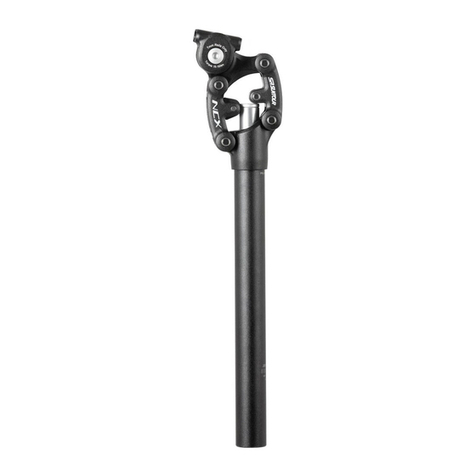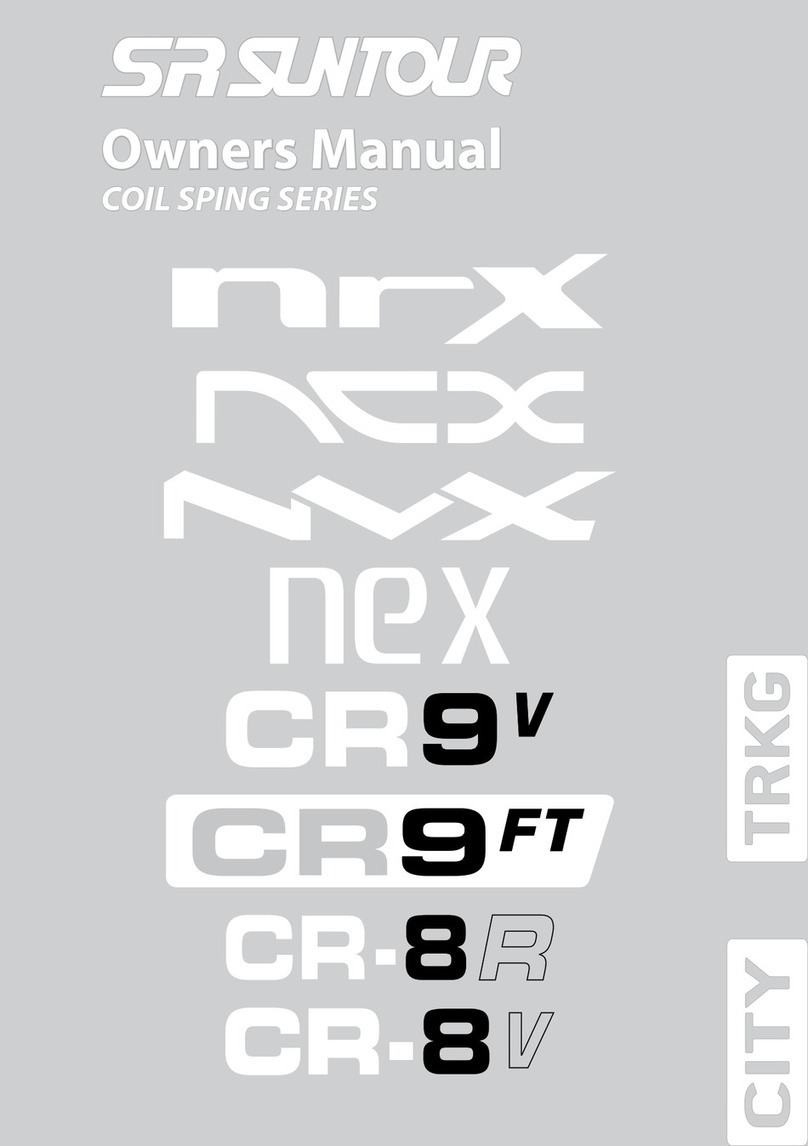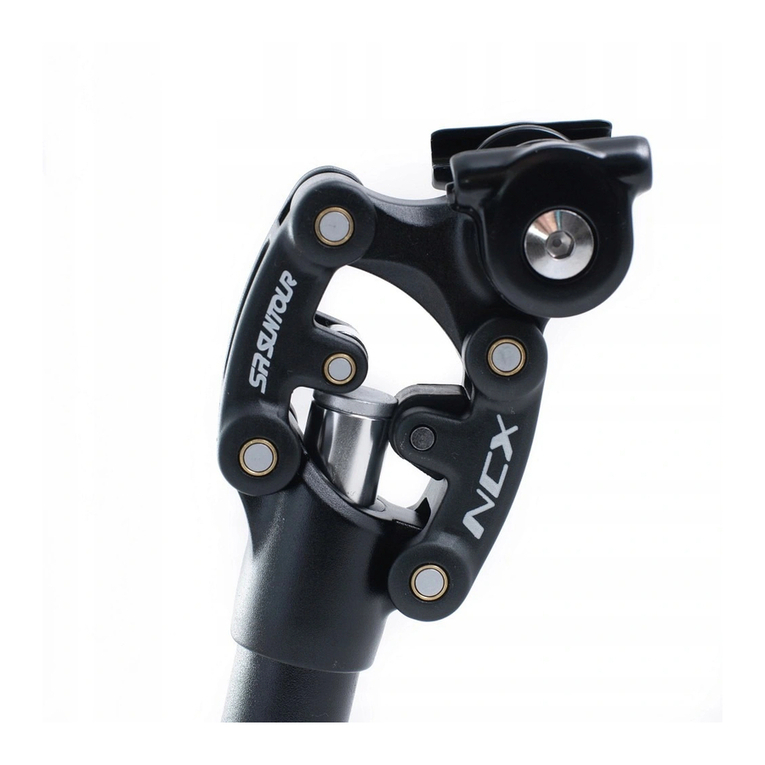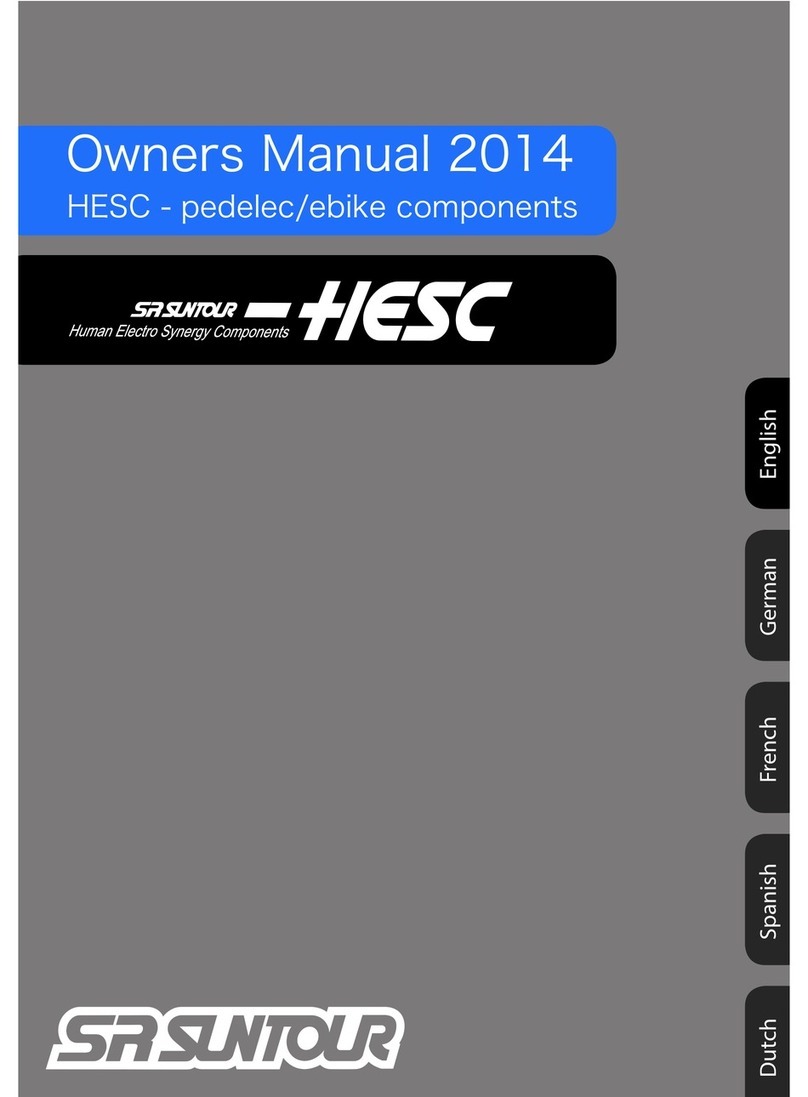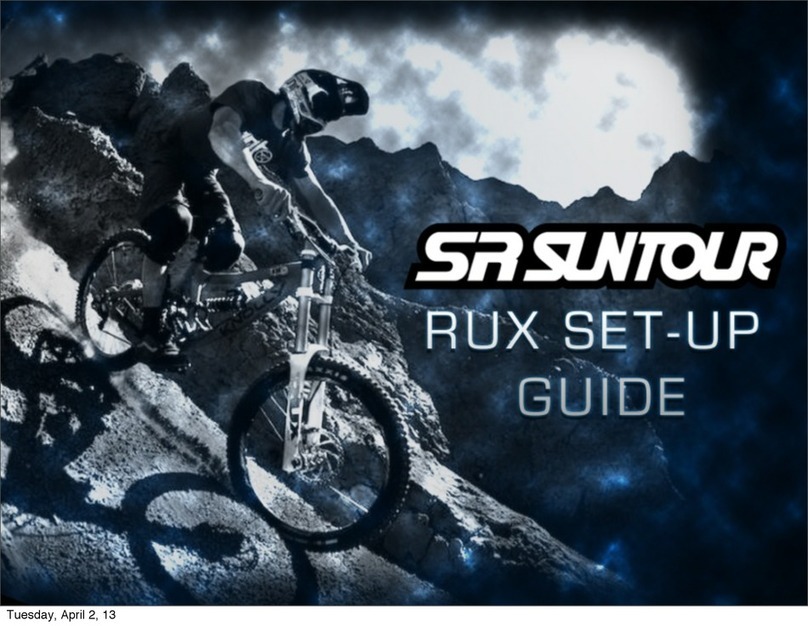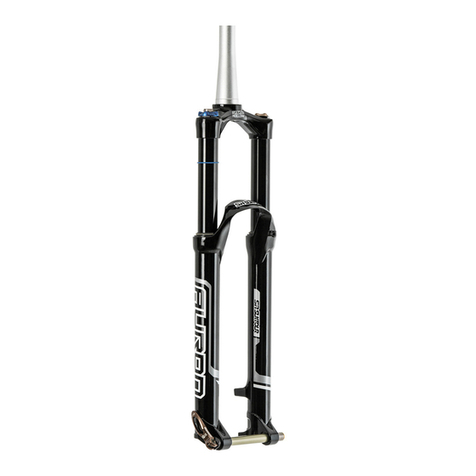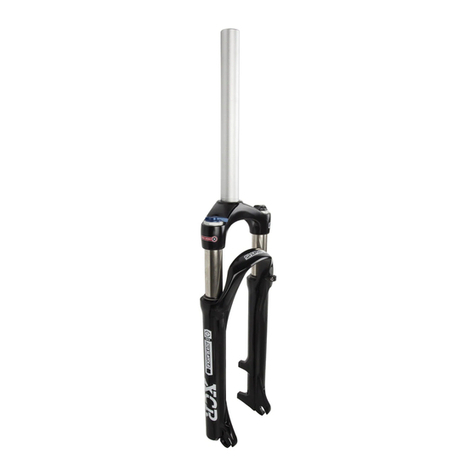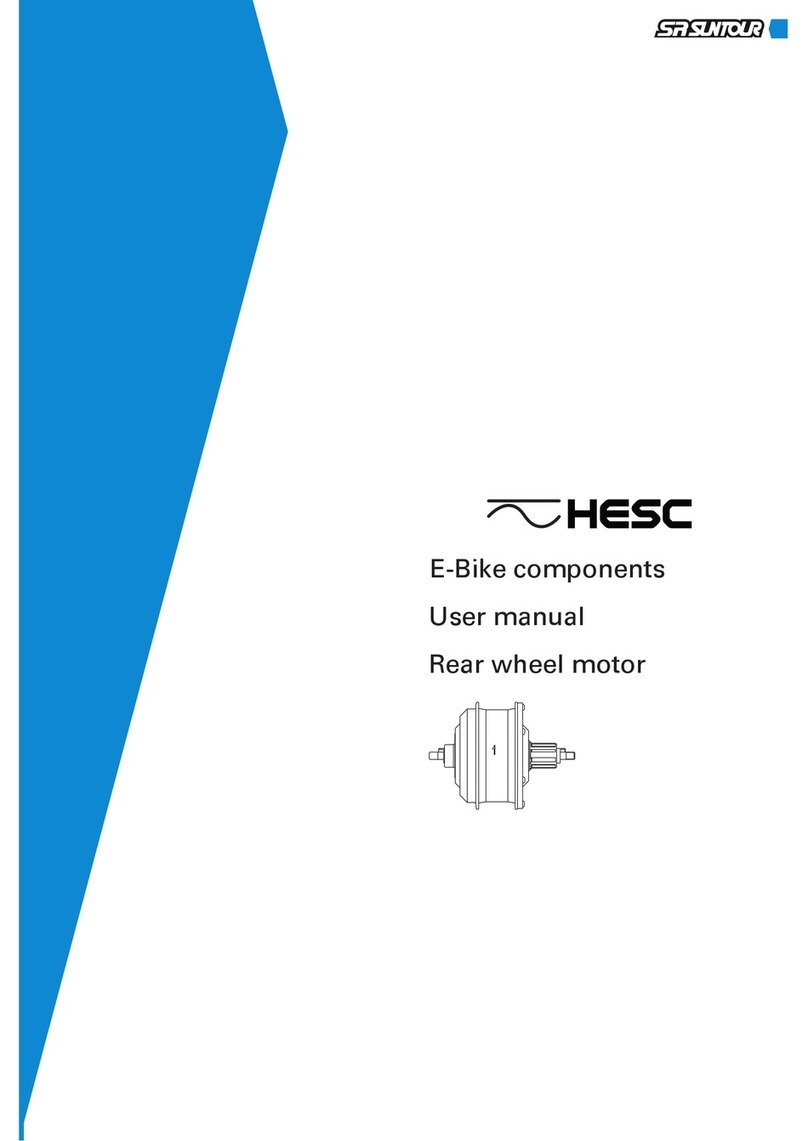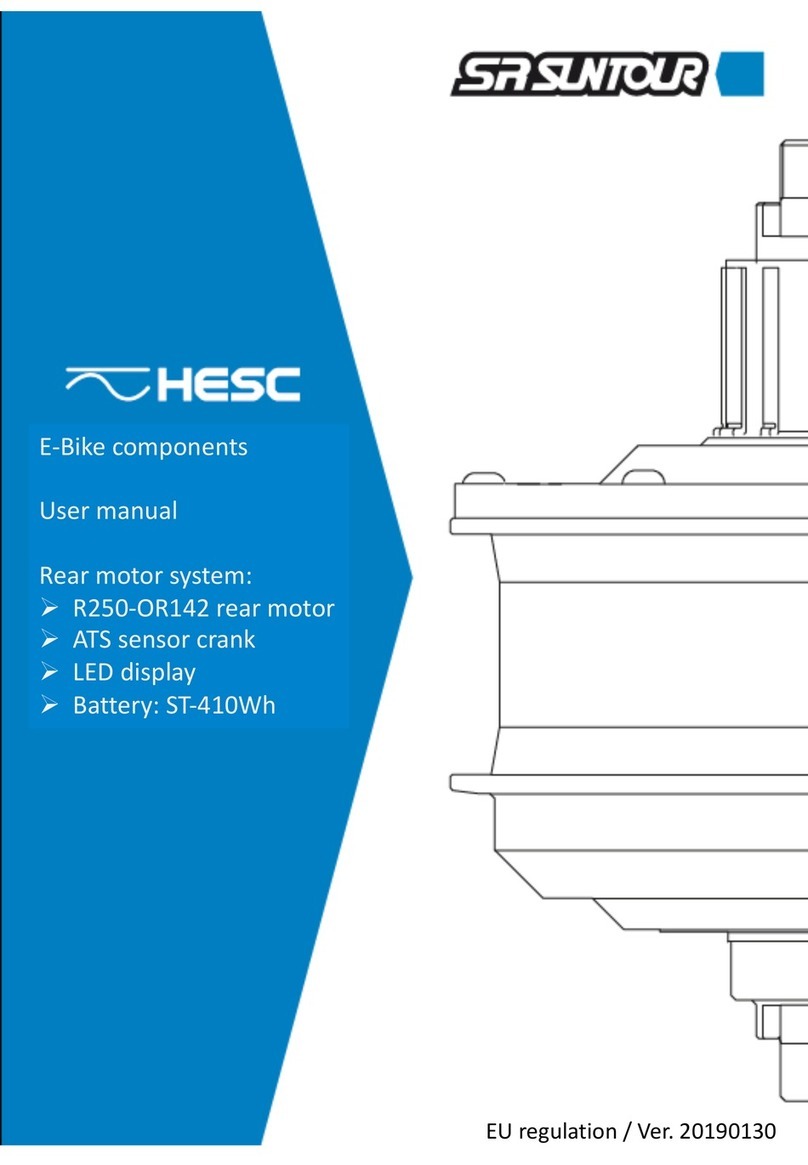
8
SETTING SAG AND AIR PRESSURE
Shock travel SAG (%) SAG (mm)
75mm
25 -35%
18.75 –26.25mm
70mm 17.50 -24.50mm
65mm 16.25 -22.75mm
60mm 15.00 -21.00mm
55mm 25 -30% 13.75 –16.50mm
50mm
20 -25%
10.00 -12.50mm
45mm 9.00 -11.25mm
40mm 8.00 -10.00mm
35mm 7.00 –8.75mm
30mm 6.00 -7.50mm
To achieve the best performance from your SR SUNTOUR air spring rear shocks, adjust the air pressure to
attain your proper sag setting. Sag is the amount your shock compresses under your weight and riding
gear and luggage. Sag range should be set of total shock travel. Make sure to set sag with the
compression knob in the OPEN position.
ØBelow chart is the suggested SAG range and the original air pressure chart, set for the SR SUNTOUR air
spring rear shock from the factory. Remember that these are the starting points. Adjustments will vary
based on rider ability, trail conditions, frame design, and personal preference. After setting up your
rear shock, check your sag to make sure that you are within the recommended SAG settings.
ØThe SAG is the compression which is caused by the rider’s weight including equipment (such as
backpack), seating position and the frame’s geometry and not as a result of riding. Every rider has a
different weight and seating position. Therefore, the rear shock will sag more or less. To assure a
proper function of rear shock and not to interfere its performance, setting a proper SAG is the
important way to find the correct air pressure for your air spring rear shock.
Setting tip for air spring rear shocks
ØStep 1: Pump up to the suggested air pressure and compress the rear shock at least 50% of full travel
several times in order to equalize the air pressure between the positive and negative air chamber.
ØStep 2: Sit on the bike with equipment (such as backpack) and ask somebody to hold the bike, stand on
the pedals, and compress the rear shock several times. Then sit on your bike in your normal riding
position.
ØStep 3: Slide the SAG indicator O-ring down to the top of the dust seal.
ØStep 4: Gently step off the bike without compressing the rear shock furthermore.
ØStep 5: Check the O-ring position to see if the SAG setting is properly done.
ØStep 6: In case if the SAG setting is not properly done, air pressure must be adjusted.
•In order to increase the SAG, decrease the air pressure.
•In order to decrease the SAG, increase the air pressure.
üRepeat the above procedure until you can find the correct SAG setting.
üUse SR SUNTOUR genuine SAG checking tool as shown in the next page.
üThe recommended SAG range is 20% - 35%, depending on the stroke.Refer to the chart below to find
the proper SAG.
